I started writing this post on my iPhone during an overnight stay on Prince Edward Island (PEI) sometime in 2015. One stop on a short road trip in Canada. The photo I uploaded to Instagram at the time confirms that was indeed exactly a decade ago1. Since then I’ve completed a few long-term projects, visited numerous portfolio reviews, been to several countries, photographic retreats, galleries, exhibitions, book festivals, talks. All in pursuit of understanding what I’m doing with the photography I am taking.
What I’m trying to say is that the scope of the post crept over those ten years. It’s all a bit of a mess.
Canada
I was driving from Mont Joli to Charlottetown along New Brunswick Route 11, South, when my mind started to wander. The road is very long and poorly maintained, meaning there are many potholes to avoid. If you position your car just a little to the right you can miss most of the holes; the big ones, they still get you.
When the road is so long and often so straight, and you can’t find a radio station that interests you, your mind does indeed start to wander. I was thinking about my reasons for being here, beyond the Formula 1 Grand Prix I had just experienced. My final destination after a brief stop on PEI would be Halifax, Nova Scotia, to meet up with Mike.

I had met Mike three years earlier at a guitar seminar in Northern France. The guitar seminar was at the home of a great guitarist you may have heard of, perhaps, but that doesn’t matter for now. The important thing is that Mike, being the stereotypically friendly Canadian, had suggested that if ever I were in his part of the world then I should stop by; so that’s exactly what I was planning to do, even though the scale for “part of the world” is slightly exaggerated for a North American.
What my thoughts eventually fixated on was the book I had read on the flight over: “Exploring Calvin and Hobbes: An Exhibition”. In the book, featuring the first interview with Bill Watterson in over two decades, a small chunk of the interview stuck with me:
“Newspaper strips were once read by tens of millions of people every single day. Everbody in America knew who Popeye was. You simply can’t compete on those terms - there’s no equivalence whatsoever: the difference in readership is Exponential. And without the mass media, i’m guessing that comic strips will lose more of their cultural impact… There is something you lose when you no longer have a shared culture. When i’m talking to people now, i can’t even assume they read the same comics that i do… And you can’t assume they listen to the same music, or watch the same TV shows, or anything. It’s all atomized. There’s little cohesive effect to pop culture anymore”.

I had been introduced to Calvin and Hobbes by my friend Kris while at university, it was a shared bit of culture. I was thinking about it while driving to Mike’s place, who I had met at a guitar seminar, a shared bit of culture. My reasons for being in Canada related to work on a long-term project, which I hoped would perhaps become a shared bit of culture.
At the same time I couldn’t find a radio station that interested me because the music was all of North American origin and even the “top hits of the 70s, 80s, and 90s” left me with a large feeling of “I don’t know any of these songs”. When I did eventually find a radio station, after a couple of hundred kilometres, it was a station playing classical music. One, two, three hundred year old culture. This was culture from a time when mass media didn’t exist, when recorded media didn’t even exist, yet it persists to this day.
The day after arriving Mike takes me on a short road trip around Nova Scotia, naturally I have my camera with me so snap a few photos. The road side vendor selling rocks attached to metal, the sign outside the gallery that promises a new show, the tricycle that reminds me of that photo.
At one store the owner is unhappy with me shooting photos of the antique pieces. I slowly grab the crank on my camera to draw attention to it, and wind the film on as if to say “well I’m sorry, I couldn’t resist the temptation to shoot a picture of an antique with something even more antique”. It seems the time scales work differently here too.
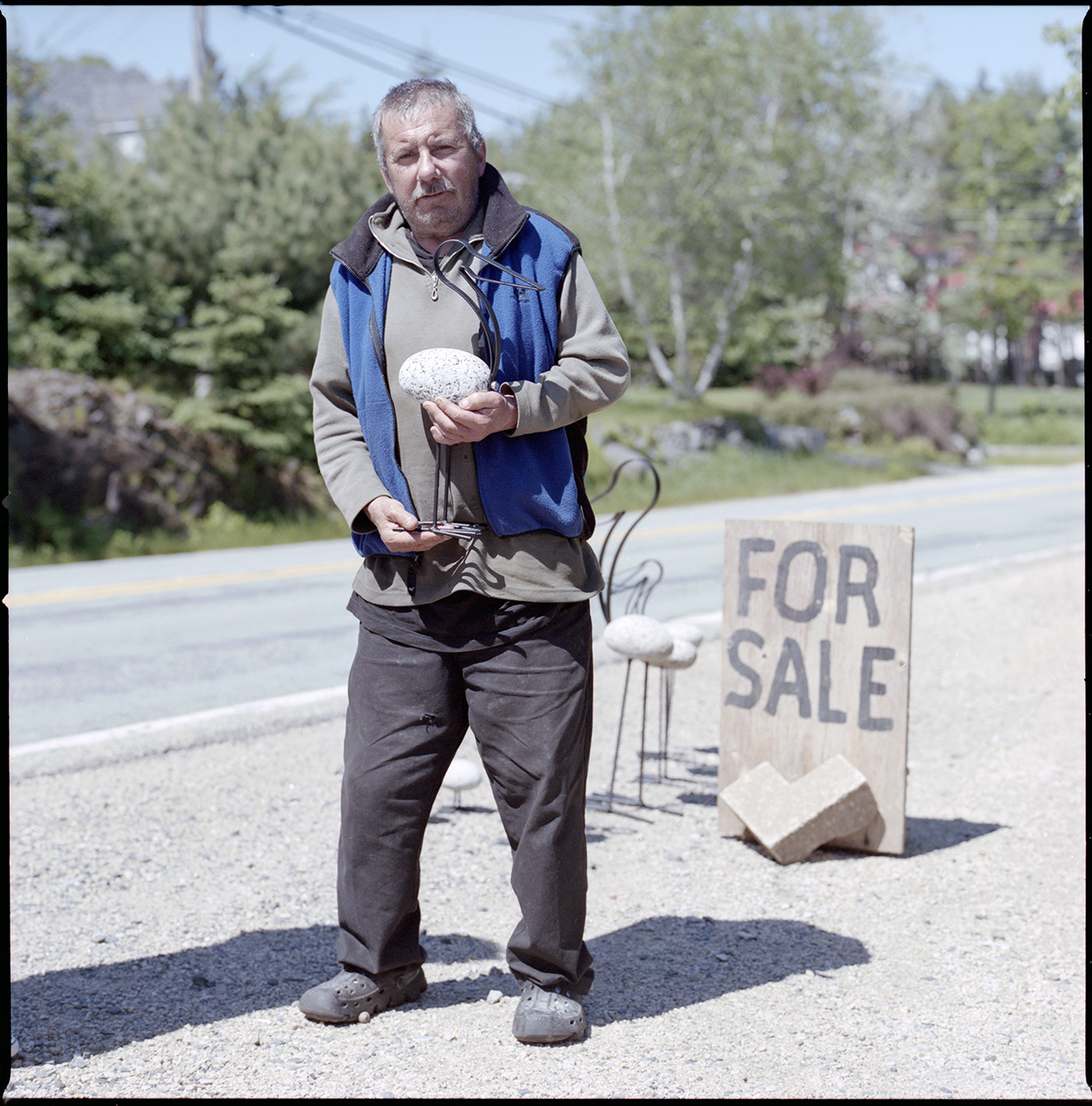
Eventually we end up back in Halifax, where I take walk around the galleries and museums. One of which covers the explosion of 1917, a maritime disaster where two ships collided in the harbor, creating what was the largest man-made explosion before nuclear weapons. It wiped out most of the city.
The devastation was so vast that a relief commission was formed to help rebuild the city. Posters advertising the plans detailed the ambitions: “Ruin and desolation have given place to the new order. A new city has risen out of the ashes of the old. We rub our eyes and look again - but the vision does not fade. The new city remains - and grows, building by building, street by street, amid the tumultuous music of a thousand hammers, the wholesome discord of a thousand saws.”2
Culture
Fast forward a couple of weeks and I find myself driving on the Autobahn, North, towards Hamburg. Understandably there are few potholes on the Autobahn and I have my own music player so my mind doesn’t wander, which is probably a good thing given the speeds attained. I’m on my way to the Triennale der Photographie3 to take part in a workshop and view some exhibitions. More culture.
Photography finds itself in an interesting place. So common it’s like breathing. Everyone has a camera in their pocket, and we’re collectively producing more photographs every week than were taken in the entire 20th century. Soon that will be every day. Then every hour. Most won’t survive the next phone upgrade, let alone be seen by human eyes.
And photography is now easy, really. Easier than ever. The technicalities can be picked up by anyone in five minutes. It’s much harder and takes much longer to figure out what you want to say, to develop a visual language that’s truly your own. To create something that stands out. Something outstanding.
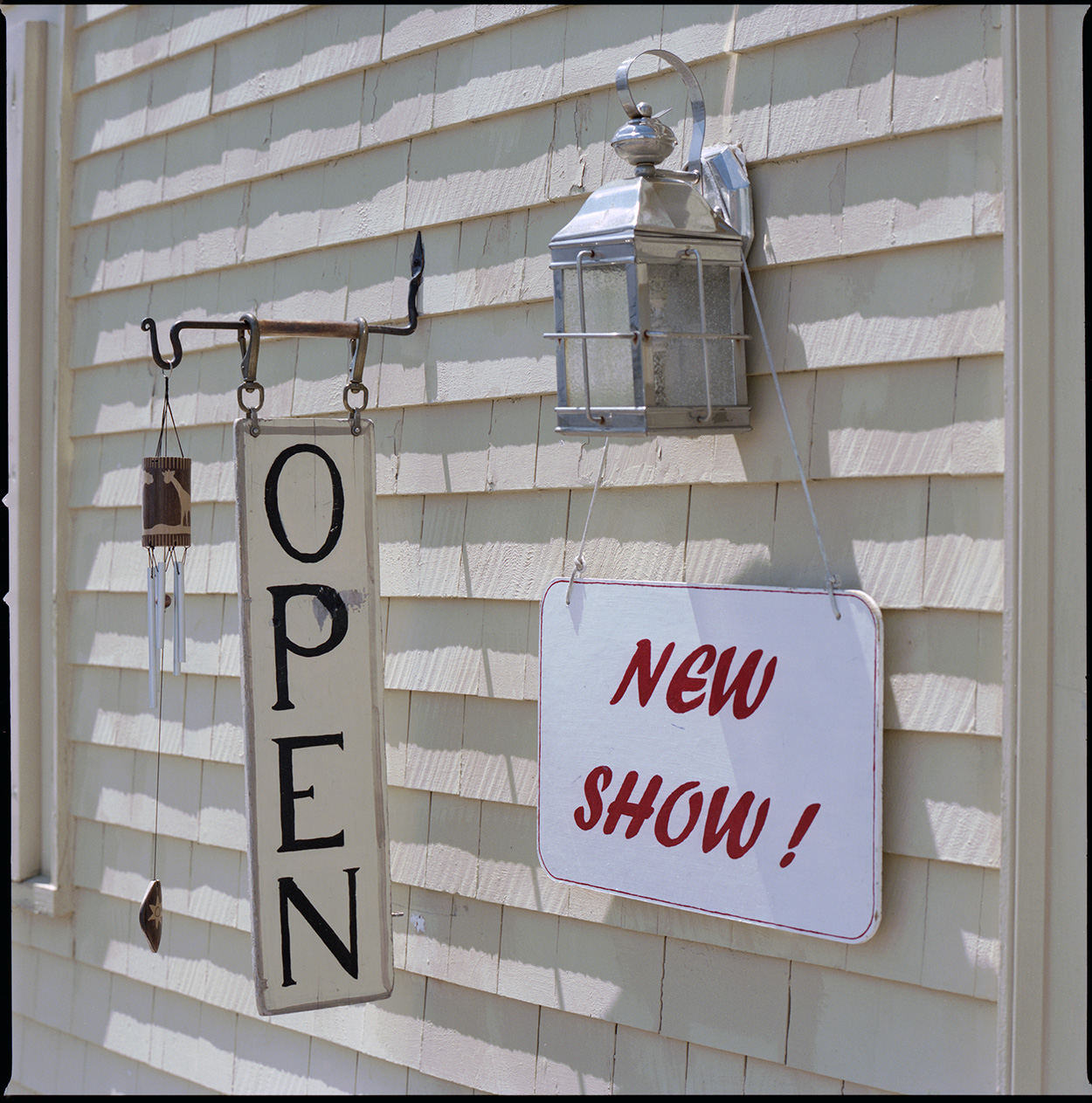
But single images don’t interest me anymore. Photographs need context, need to be part of a sequence or a series to have lasting impact. Sure, single images can work, and sure somtimes a photo choses you4, but even those decisive moments gain power when they’re placed within a broader body of work, when they’re part of something larger than themselves.
And the rules of photography don’t interest me anymore. Fuck your rules. There’s a million or more videos on YouTube telling you how to take photos, just so you can take exactly the same photos as a million other people. A million different technicalities shot a million times over. Turns out, even though a picture is worth a thousand words we keep writing the same thing over and over again5.
I’m tired of the thirds, the leading lines, the frames, the bokeh. I’m fatigued by the practice of drawing guidelines on iconic photos because that can somehow be taken as a generalisation. There’s a huge difference between good composition and contrived composition, many iconic photos are more serendipitous than premeditated. Drawing the Fibonacci spiral atop means nothing.
I’m fed up of seeing portfolios that have a separate section for black and white images. Why? Why can we not mix those with the rest? I’m bored with the boosted shadows and the unclipped highlights, that speak of an aversion to any ambiguity. Are we that visually illiterate?
It feels like a bunch of artifical walls we are made to scale. But if not those walls then it will be others. That’s what you see at these photo festivals. White walls, gallery walls, projection walls, portfolio walls. Everyone competing for limited wall space, for limited attention spans, for limited funding. Spending thousands on printing, framing, and shipping just to have the work seen for a few days by a few thousand people.
Yet we all keep doing it because those walls still confer legitimacy in a way that online likes never will.

Ephemeral photos, long-term projects? Most of what I photograph will never matter to anyone but me. Of the tens of thousands of frames I’ve shot, perhaps a few dozen will outlive me, and even fewer will be seen by strangers a century from now. So why bother with long-term projects, with work that takes years to complete, when the cultural landscape shifts so rapidly that by the time you’re finished the conversation has moved on? Because the long-term projects, the works with depth and commitment behind them, are the ones that have any chance of lasting impact.
The photographs interspersed amongst the paragraphs here are nothing special, mundane even, but I include them as they were taken on the road trips mentioned throughout this post. The alternative is that they sit on my computer (and in my negative box) never to be seen, and what’s the point in that? Sometimes a bit of background noise is necessary and, yes, sometimes we need to take a picture because no one reads the articles6.
Drowning in culture, we skim, we rush, we skip over. At the same time we favourite too much, follow too much, the signal to noise ratio is larger than ever. Our attention has become a commodity, harvested and sold by platforms that profit from our endless scrolling. We open tabs for articles we’ll never read, save posts we’ll never revisit, follow accounts whose content blurs together into an indistinguishable stream.
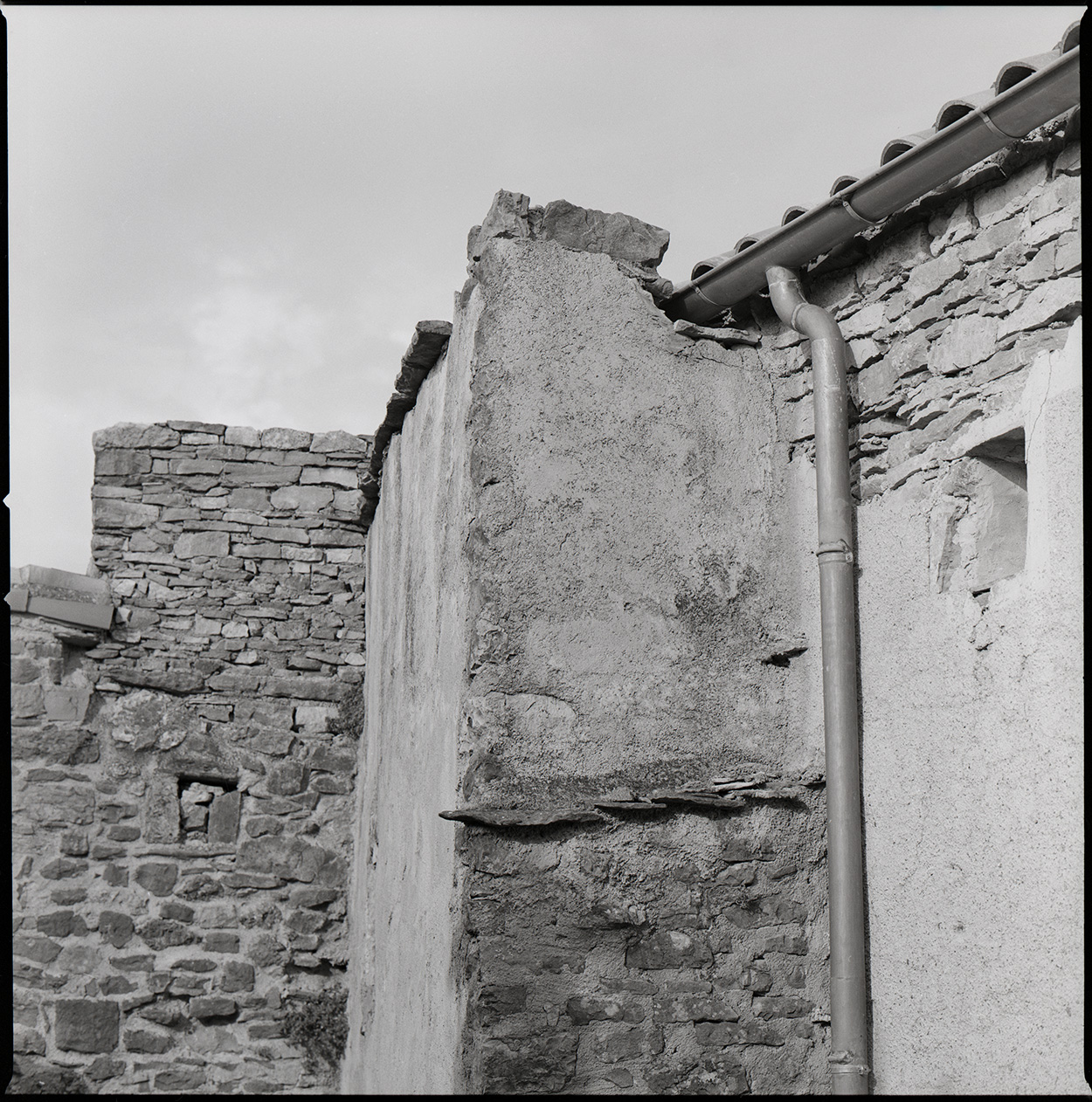
A certain subset of people will favourite every image I upload, but to paraphrase: if everything is your favourite then nothing is. The inflation of digital praise has rendered likes and favourites meaningless. Instead I find real value in the thoughtful email or private message that engages with the work in a way that suggests genuine connection.
Cévennes
Fast forward one year and I’m driving yet again, this time towards Bez-et-Esparon for a photographic retreat. I’ve been on the road for seven hours but the curves, hairpin bends, and undulations on the horizon almost fool me into thinking I’m still in Switzerland.
Really we’re all on one big curve, an exponential curve to nowhere. Inevitable, given an exponential curve is not sustainable. The democratization of photography, the explosion of content, the fragmentation of audience - it’s all happening at a pace that makes it hard to find stable ground. We’re constantly racing to catch up, feeling behind, trying to make sense of a landscape that transforms even as we observe it7.
The dream of the internet connecting us all has given way to the reality of the internet dividing us into ever more specific niches, each with its own language, references, and perspective. Photography is no exception - there are entire communities of photographers who never interact, who practice different approaches to the medium, who might as well be working in other art forms.
The wholesome discord of a thousand saws.
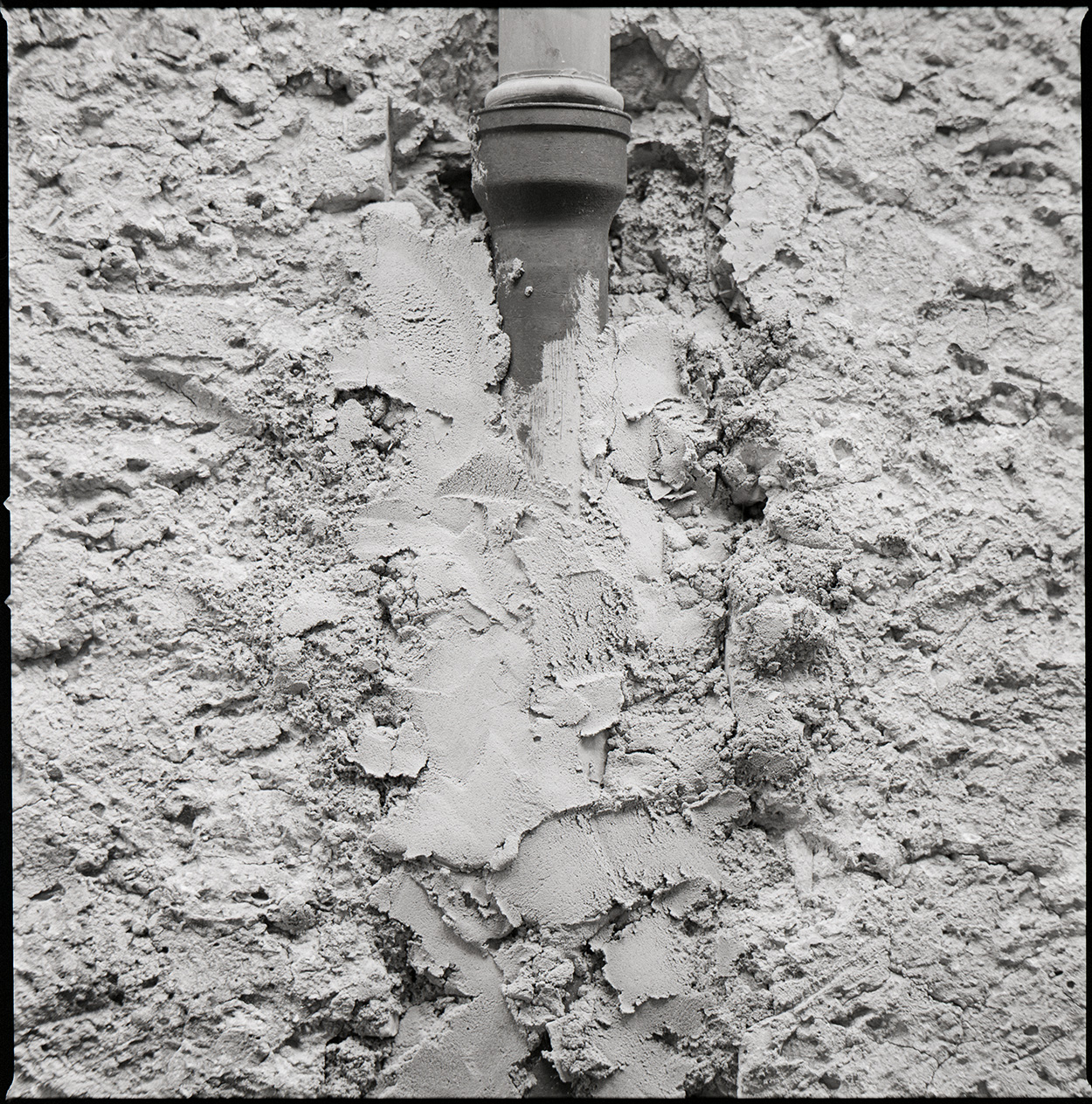
The reason I’m here, in Cévennes, is to join a retreat that brings members of those disparate communities together8. A week to look at our own work, other’s work, to critique, to inspire, to find direction.
Commitment
Fast forward another three months and I’m sat in Nagoya station waiting for the Shinkansen to take me to Tokyo. I’ve arrived half an hour early even though I know that if my ticket says the train departs at 19:34 then the train will depart at 19:34. The Japanese train system is that good, and as if to prove it to me I witness a ten minute period in which the Shinkansen depart from the two platforms in turn once every two minutes.
Tokyo and Nagoya are civilised, in the way big cities should be. The kind of civilised in which its citizens stand calmly waiting for the green man, even though they can see the lack of oncoming traffic for half a kilometre in either direction. This is the kind of civility we should all strive to achieve.
It also feels like being in the future, but a future that arrived unevenly. The train system is decades ahead of what we have in Europe, yet other aspects of society seem preserved from another era. The convenience stores that look like they were designed for a sci-fi film, next to traditional temples that have stood for centuries. Digital payment systems that make Apple Pay look primitive, alongside businesses that still insist on fax confirmations. It’s as if the future arrived in specific sectors while deliberately preserving the past in others.
The Japanese excel at long-term projects. The Chūō Shinkansen maglev line has been in development since the 1970s, with its first section not scheduled to open until 2027, and full completion targeted for 2045. A project spanning generations, requiring a level of societal patience and commitment that seems almost impossible in the West.

Shinjuku presents a fascinating contradiction - the constant barrage of light and sound being at odds with the reserved nature of the Japanese. Neon signs stacked ten stories high, pachinko parlors that assault the ears, video screens larger than tennis courts, all while pedestrians move with quiet determination, rarely making eye contact, maintaining their personal space in a crush of humanity.
I find myself falling down rabbit holes of obscure blogs9 that document abandoned places and forgotten corners of the country, depopulation, failed development projects, the ghosts of Japan’s bubble era. The included snapshots are elevated to a purpose beyond aesthetics: documenting a vanishing world.
China
Fast forward again, again, again. April 2017. I’m on an actual Maglev train heading towards central Shanghai. 431km/h. Six minutes of near state of the art, but it’s thirteen years old already. Shanghai feels high-tech but archaic, like it went looking for the future but got lost so just kept going. The result is that everything feels like a knockoff, even the city itself. Like anything you looked at just a little too closely would fall apart.
The sprawl of the Shanghai subway system is mind-boggling - 19 lines, 500 stations, over 800 kilometers of track, moving 10 million people daily. An underground city more populous than many countries. You could spend years exploring this thing and still not see it all.
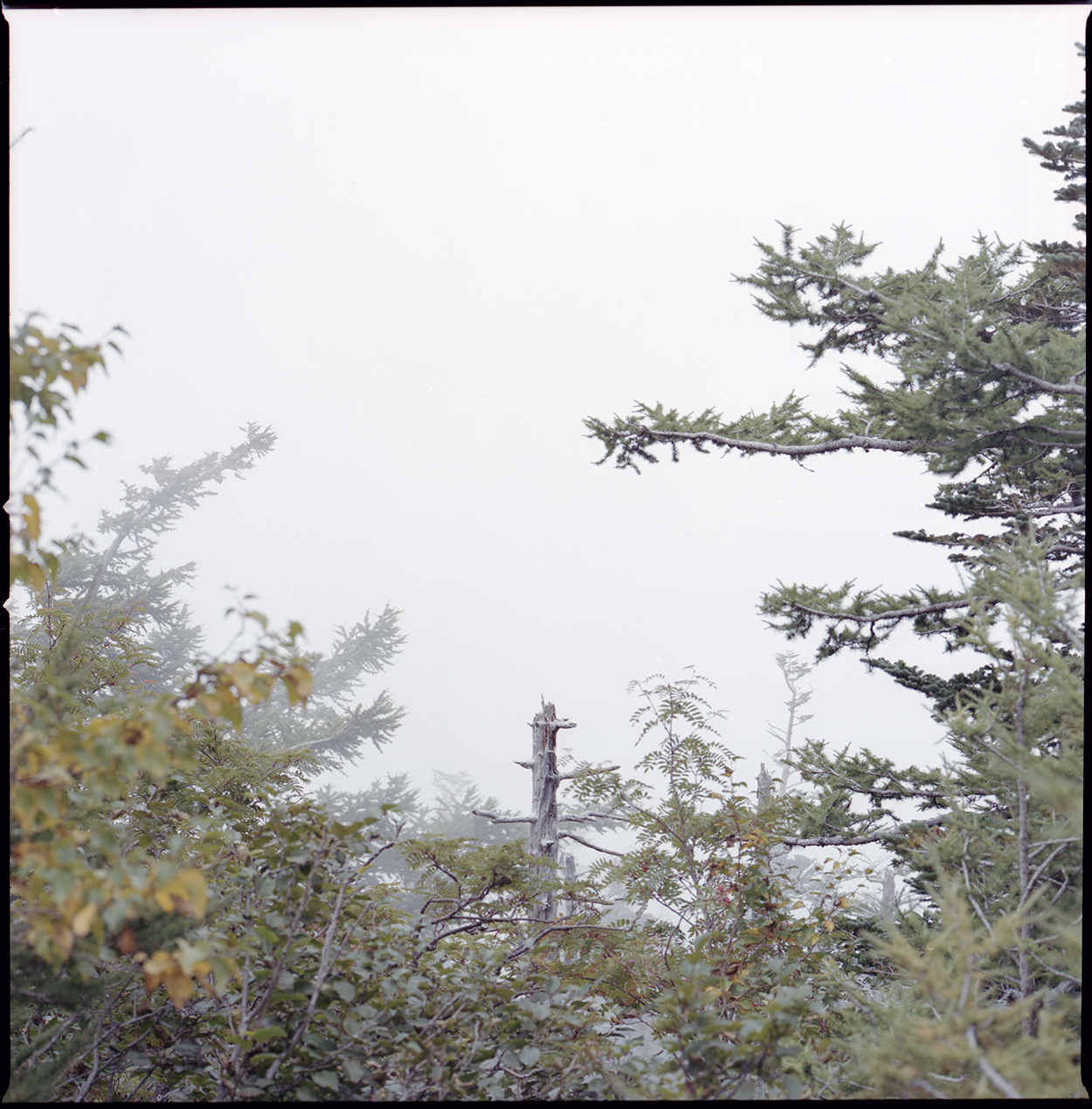
I was only in Shanghai for three days but it was enough. It wasn’t the things you expect that got to me, but the x-ray machines. Everywhere. The entrance to the metro, then the Maglev, then the airport, then security. More than a dozen times in the space of a long weekend. Eventually I’m just resigned to the feeling that my film is toast.
Cortona
July 2017, there or thereabouts. I’m at the opening of a photo festival in a small medieval town in Tuscany. A town that in no way was built to accomodate even those little Italian cars. The Italians, of course, will still give it a go10.
I’m here to look at the work, of course, but the key attraction is the portfolio reviews for the main project I’m working on. It is getting to the point that some direction would be useful but I quickly realise that the twenty minutes is really fifteen minutes of the reviewer taking in the work, then five minutes of not so useful advice.
“You should take a look at this person’s work” (I have)
“You should contact this person” (I tried)
“This is good work, keep going with it” (Thanks, I will)
I volunteer to shoot photos at the festival because, well, I guess I’m feeling benevolent? I get absolutely no brief or direction from the organisers who initially seem to resent me being there. Maybe it’s because I turned up with no camera equiment other than a tiny little point and shoot? I figured since a well known camera brand are sponsoring the festival they can provide me with some proper gear. I figured correctly.
After the first day the organisers realise my initiative and that I’m competent (I repeat: it’s easy) so they start to give me a bit more direction. The photos end up all over social media, the web, even used to advertise the festival for the next couple of years.
Nothing comes of any of it. Inevitably. Including the portfolio reviews.
Santa Fe
It’s October, two days after The US Grand Prix, and I’m driving through the New Mexico desert in a rental car with a fuel tank the size of a thimble. The warning light has been on for the previous ten miles and there is no refueling station visible on the horizon.
I thought I’d estimated this well, but hadn’t anticipated the last two refueling stations being closed down. When you’re out here you refill when the gauge says half, I would later learn, because those things often don’t work on a linear scale.
The event I’m heading to, Review Santa Fe, used to be the pinnacle of portfolio reviews in the American photography scene. Getting accepted was a badge of honor, a sign that your work had potential. Some photographers getting book deals, gallery representation, museum acquisitions from these meetings.
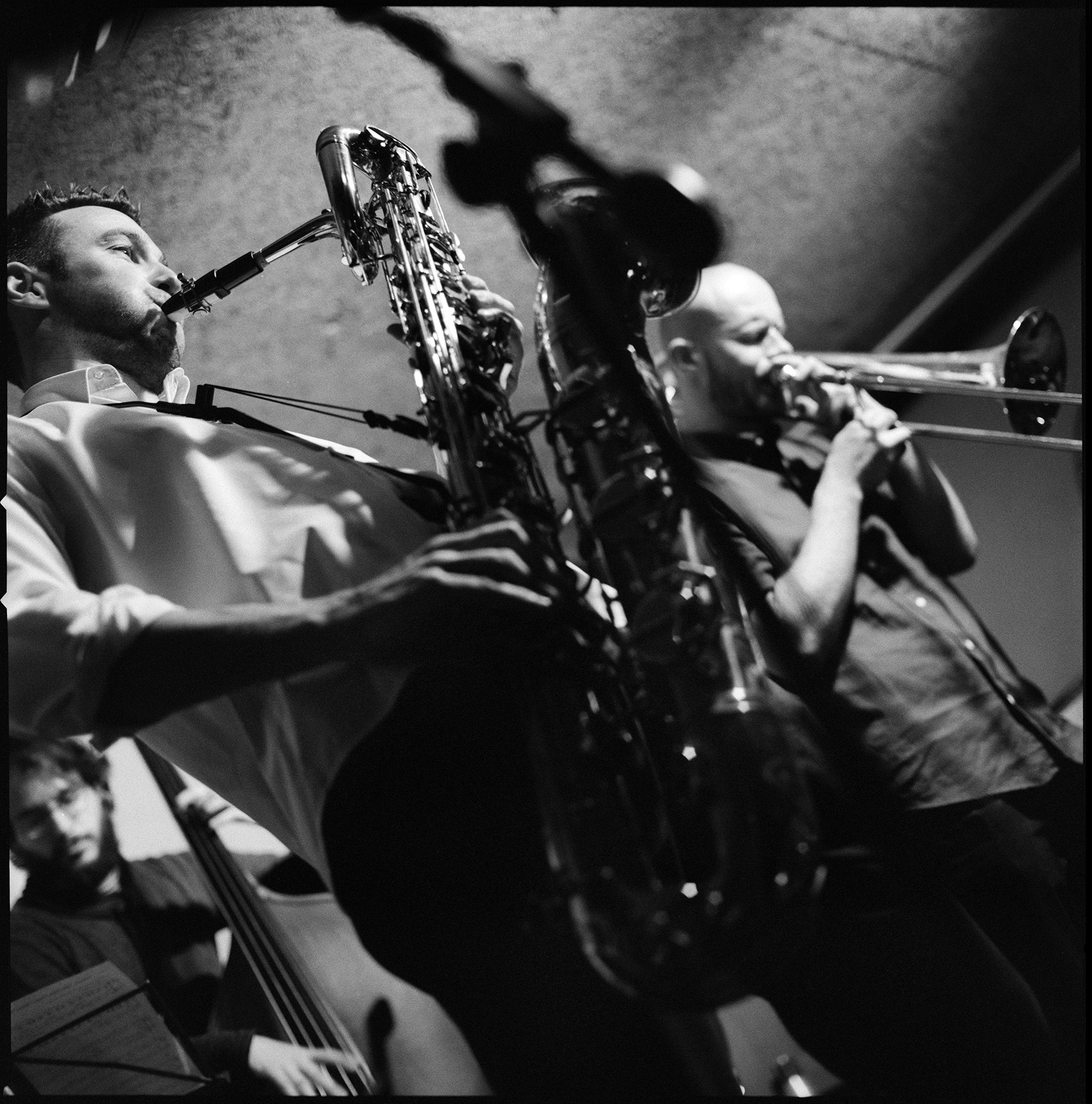
But those days feel distant. The gatekeepers still exist but their rules have evolved to cope with the flood, and their moats guard smaller and smaller kingdoms as the photography world fragments into countless self-sufficient communities online.
Portfolio reviews have started to feel like money grabs for a while anyway. $50 for twenty minutes with someone who might change your life but more likely will offer generic encouragement before forgetting your work the moment you leave the room.
Villars
I get back from Santa Fe to discover my boss has opened a jazz club, because why not?
Jazz has “rules” but is free form. There’s a key signature, a tempo, a motif, some structure. But then there’s improvisation, a few bars where you can do what you want. Sometimes it’s bad, sometimes it’s good, and occasionally, maybe one in fifty or a hundred, it’s amazing.
After a few months of the jazz club being open I start to take my camera. I’m not sure if it’ll work, the club is dark, I shoot on medium format film, I limit myself to two rolls per evening. Just 24 frames. Photographers have been doing this for decades though, and (again) like I said: the technicalities are easy, so of course it works.
New York
The next twelve months are a blur, for reasons i might explain another time, and near the end of 2018 I find myself in New York. I said i wouldn’t ever travel to the US while that see you en tea was in The White House, but I make a single exception.
Jumping from one vanguard to another, many of them even, I find myself questioning if the term still makes much sense. We’ve been to galleries, exhibitions, shows, pop-ups. Some interesting, some not so much, but many are a reminder you have to do stuff you don’t care about to do the stuff you do care about. Eventually we end up a place that feels a little off.

We’re being shown around by one of my mentors from Cévennes, and her sarcasm cuts through Kravitz’s work that we’re viewing like a knife. It’s bad. Unfathomably bad. And even though the pictures are black and white the sponsor’s product placement in every image still manages to be garish11. It’s so bad I want to punch the face of every single person that features in the photos, and then strangle Kravitz with the strap of his faux-beat-up Leica12.
This isn’t photography, it’s a rich person’s masturbation. The results splashed all over the walls in expensive large format presentation.
Champagne
It’s almost 2019 and I’m in the desert, sort of, which is appropriate given I’m feeling increasingly burned out. This will be the last time I shoot photos, I promise myself, at least for this particular project.
There will be no champagne on the podium for this event, the customs of the country won’t allow it. At least in public. Later on I’m sat in the bar of the hotel, and the alcohol is flowing freely. I observe a woman walking around the bar offering all the smokers the option to swap their near-empty packs for a fresh one of a particular brand. Smoking indoors is still legal in the country for the most part, given the alternative of being outside in the heat. This country is a mass of contradictions and hypocrisies.
Security theatre is in full swing here, and I repeatedly have to demonstrate what my cameras are before being allowed into various areas. I press the shutter, I wind the film on, I see utter confusion on the faces of the X-ray machine attendants. “It’s film. You know, Kodak?”
This doesn’t do the feeling of burnout any good, but other than the security checks I’m largely left to my own devices. Occasionally I am asked about my cameras, which is nothing unusual, but at one point the owner of a food stall I am framing in the waist-level finder suggests I take a trip with him the next day to see the real Abu Dhabi. I thank him for the offer, alas my flight leaves early. That’s just an excuse as I can’t help but think that would be a bad idea and, besides, “the real Abu Dhabi” - Isn’t that just the desert?”
Burnout
Late 2019 and I’m burned out, for real this time. I broke my promise and went back to Monaco. A fifth time. A second time with the large format camera. Carrying that thing kilometers around the principality, an exercise in self-punishment. I’m retreading old ground, metaphorically and literally, and nothing new comes of this trip.
Later on in the year I volunteer to shoot photos and record video for technical workshops. I’m asked to shoot for the local three day jazz festival. I try to get in to the Fête des Vignerons on a press pass, but it’s too late. They’ve been organising this thing for a years, I’m not going to be able to sneak in at the last minute.
I try the same at other music festivals, events, conferences. Anything to keep the momentum up, but it’s too much. I’m heading towards a wall.
I just need the world to stop for a moment.
Covid
It’s 2021 and everything is fucked.
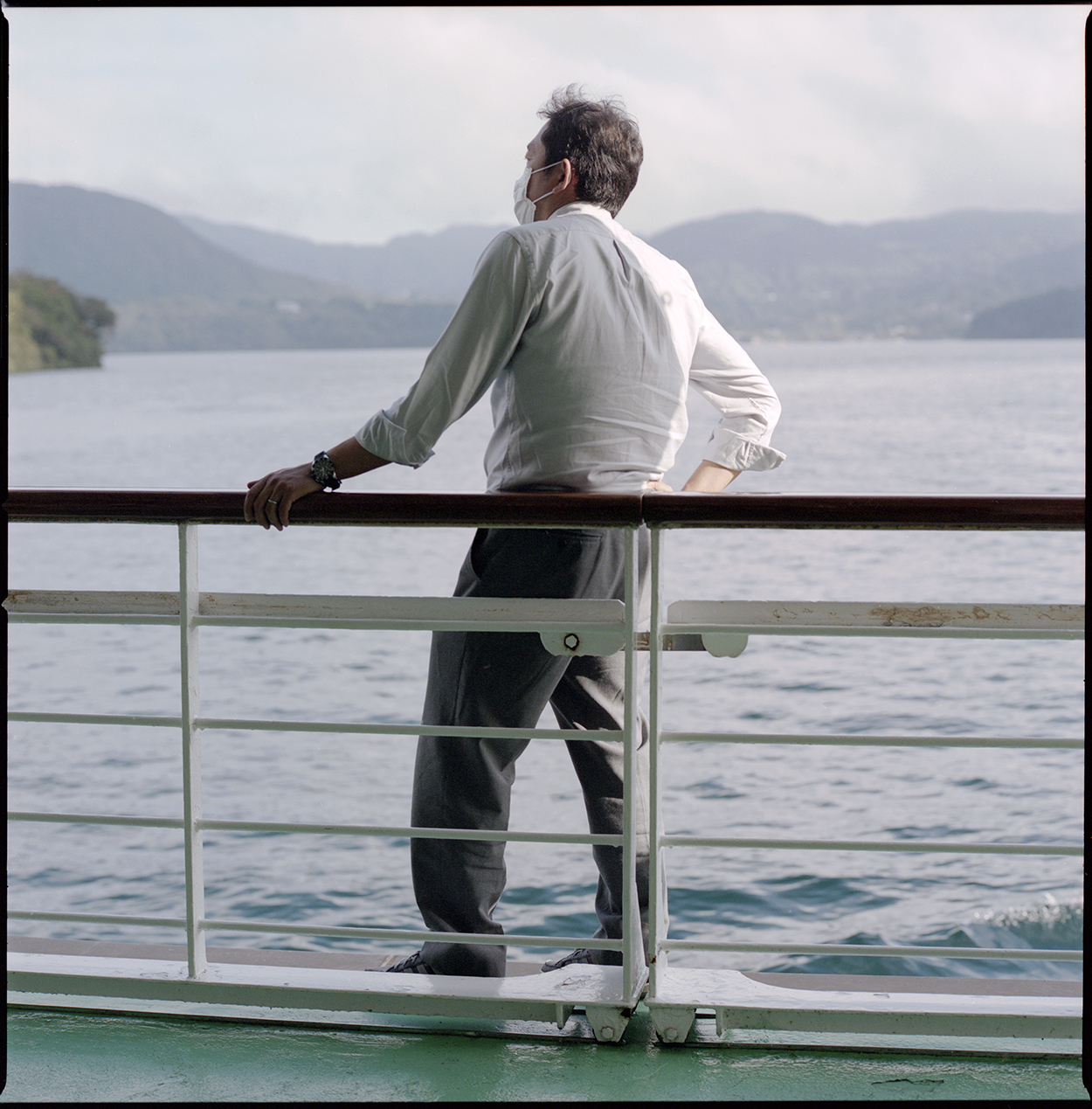
Lockdowns, social distancing, isolation. It’s approaching two years since we’ve left the country, but the time has allowed the burnout to heal and eventually I thrash through an edit and maquette of the project I’ve been working on for the last twelve years.
The long edit, short edit, pairings, sequence, and maquette process have been challenging. The scope is still way too broad, there’s too much material, too many photos, but I now have a physical object I can present if and when in person meetings with curators ever return.
Curation
Curation is the largest problem facing the big four (five? six? … n?) in terms of engagement. What to highlight? The “best” (whatever that means), the most popular (whatever that means), the noisiest (whatever…). The one that has the best potential return on showing ads? And how do you scale this to a platform serving hundreds of millions or even billions?
Almost gone are the days of a human looking at work and deciding what is worth looking at, now replaced with machine learning and algorithms to tell us instead. But what does a computer know about art? Because of that you can be sure what i’m seeing is not the same as what anyone else is seeing. A shared culture disjoint to keep you on the platform. Keep you scrolling. Keep you viewing ads.

I don’t care how highbrow or lowbrow the culture is or how you define it: television, film, books, music, comics, photography, art, boats, antiques, programming, sport, snowboarding, travel, cars, wine, beer, food, drugs, clothing, celebrities, whatever. The point is that it is there and shared, and that’s probably a good thing. However, when that culture is shared it’s often through aggregation sites. Really that’s just a nicer way to say regurgitation13.
Caves
It’s the autumn of 2023 and AI is going to kill us all, or at least all the culture creators. The ultimate death of the author via an emetic generative pandemic.
A group of eight of us are on an island for a workshop about looking for photos, just not the obvious ones. The ones you miss, or most people miss. The gaps. To do that you need to put in the miles, on foot, and put in the time. There are no shortcuts here.
We’re in a cave of ruins, complete with roof and air conditioning. Ancient Akrotiri, buried under volcanic ash for millennia, preserved like a Bronze Age Pompeii. A civilization frozen in time, with pottery and frescos still intact after 3,600 years. The archaeologists left many artifacts exactly where they found them, creating this strange time capsule that feels both authentic and curated.
Sontag said “everything exists to end in a photograph”, and these days that extends to being shot by everyone and seen everywhere. So when I turn a corner way up above one of the many beaches on Santorini I’m stunned by the scene in front of me: An abandoned car, possibly crashed, with its own flying dress of cacti. Perfectly positioned for a competent photographer to capture the scene. So I shoot a photo, safe in the knowledge that someone has already shot a much better one - I just haven’t seen it yet.
It’s perfect. Too perfect? Why haven’t I seen this before? Maybe I’m fooled by the nature of the island’s dust to make even yesterday night’s parked cars looked abandoned for years, but this one has more than that.
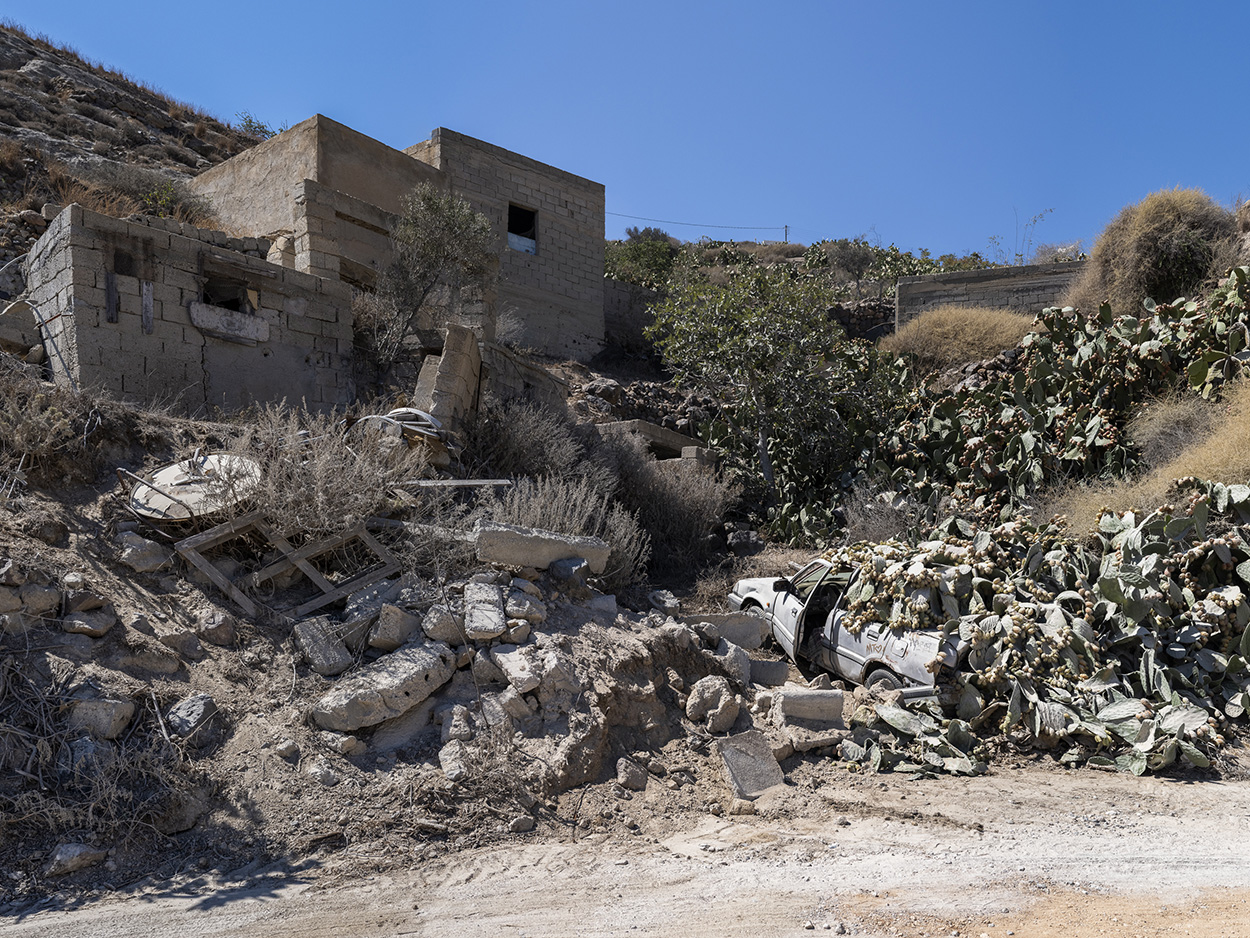
Our host tells us the car has been there for years, and my internet digging reveals some clues as to its age: a pin on Google maps with a few poorly shot photos attached to that, with comments going back a few months. More digging shows a photo from 2019, with the car’s roof already full of holes due to rust. So it’s likely that the car has been there for decades given the island’s climate.
The workshop continues, more photos are found, obvious ones, not so obvious ones. I’m a different photographer than I was eight years ago. Better. More considered, more visually literate. I’ve absorbed more work, I’ve evolved my approach. There is still room to improve however, there always is, and more work to look at and more things to find.
To again paraphrase: If you think you’re the best photographer in the room then you don’t really understand photography.
Committees
It’s November 2024 and I’ve failed to get into Review Santa Fe this time. Well, I got on the waiting list and a spot opened up, but I decided not to play the game. I avoiding writing wordy bollocks to describe the work and instead summarise the project as “Here are some photos I took, I think they’re interesting”. If the projects can’t stand up without statements then they’re weak projects.
One selection committee member generalises their views on submissions observing “a surprising disconnect between the artist statements and the work itself”, a masterfully subtle dig. Interesting statement, bad photos. If there’s one thing I hope generative AI kills it’s the need for artist’s statements. I can’t take them seriously anymore. They’re the ultimate form of turd polishing.

I’m done playing the game. I’m done with portfolio reviews. I’m done with open calls. I’m done with pay to submit contests. I’m done with all of that. Once you separate the wheat from the chaff you’re still left with an absolute tonne of wheat. All of it deserving praise, awards, promotion, publication. None of it more deserving than any other. It’s all arbitrary depending on whatever the current flavour of the week/month/year’s culture is.
The math doesn’t work anyway: $1,000 for a weekend of reviews, plus travel and accommodation (not included), for the slim chance of connection with someone who might, possibly, if the stars align, help your career in some undefined way.
Chipping Away
It’s 2025 and attention spans are at an all time low. Maybe that’s why it’s taken ten years to write this blog post? I’ll just keep chipping away at it, I’ll finish it eventually, it’ll be done someday, it’ll be good, it’ll be uploaded. It’ll… what? It wont’ll be read this far that’s for sure. Who reads anything longer than 1,000 words these days? You got this far? I owe you a beer.
We’re in Zermatt for the i’ve-lost-count’th time, and at the Unplugged festival for the fourth time. It’s become another retreat: music, snowboarding, and some photography. I could volunteer to shoot photos for the festival to get better access, but I don’t. I could hashtag and @ and geotag and DM and share and follow all the things I create photos of. But I don’t. What’s the point anymore? There’s a hundred other people doing all of that, why do I need to?
We’re here for the moment. For the music. For the snow. For the culture.
Culture?
Watterson’s point about cohesion is true, but does it matter? And anyway, comic strips are bastions of consistency, and these days consistency is an attention-grab dead end14. If you jump out of your own petri dish you will always find the culture much different, this has always been the case. Now we have the web throwing all the samples in a bucket and saying have a bit of everything. If you don’t like it then the next sample is only a click away.
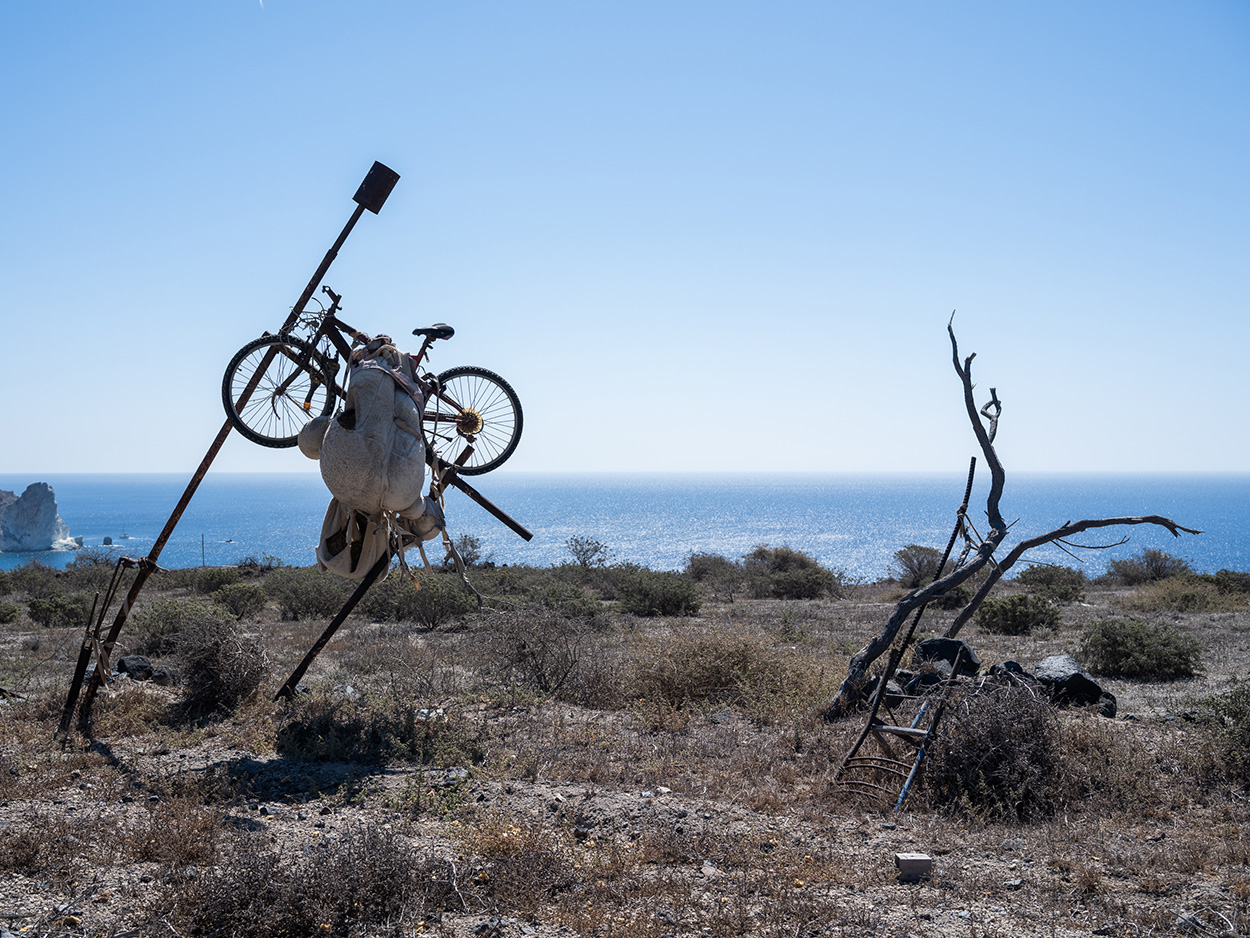
Does that mean the culture’s impact is diluted? Probably. Does it matter? Probably not, but it follows that if we are defined by our cultural interests then a larger variety of parts leads to a far more interesting variety of wholes. There will be fewer parts in common, if that is the case then perhaps that means we should have more to talk about. Tell me about the things I don’t know, or haven’t seen.
Fill in the gaps.
If we want to restore some cohesion then perhaps we should occasionally hold back. Spend a day, a week, even a month, where you don’t contribute to the inanity. Don’t write that tweet, don’t upload that photo. Save it for later, maybe for something more meaningful, something better, something bigger.
The information superhighway, to use an outdated term, is littered with cultural potholes. Most of us do our best to avoid these potholes and instead focus on the radio stations we have tuned into. Sometimes the cultural potholes are large, even if you manage to avoid those you can’t help but take notice. Maybe even get sucked in.
The big ones, they still get you.
-
Yes, that’s a Sole [mis]quote. ↩
-
https://www.wallpaper.com/art/lenny-kravitz-photography-exhibition-new-york ↩